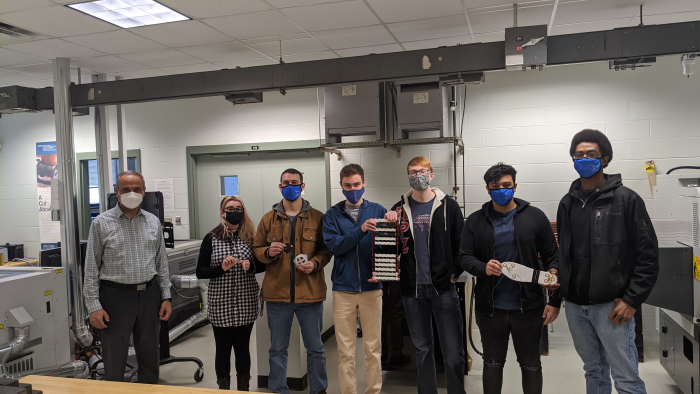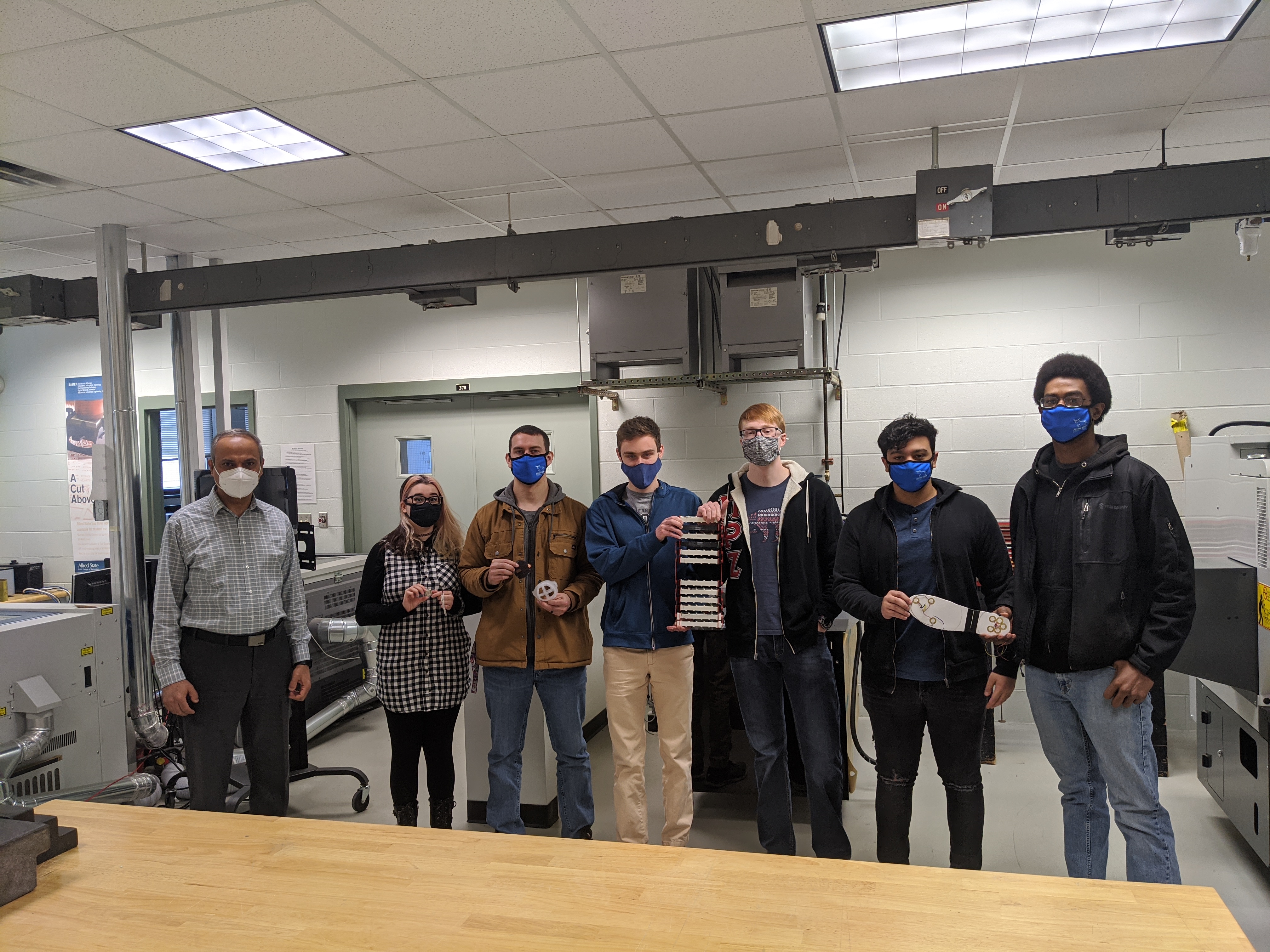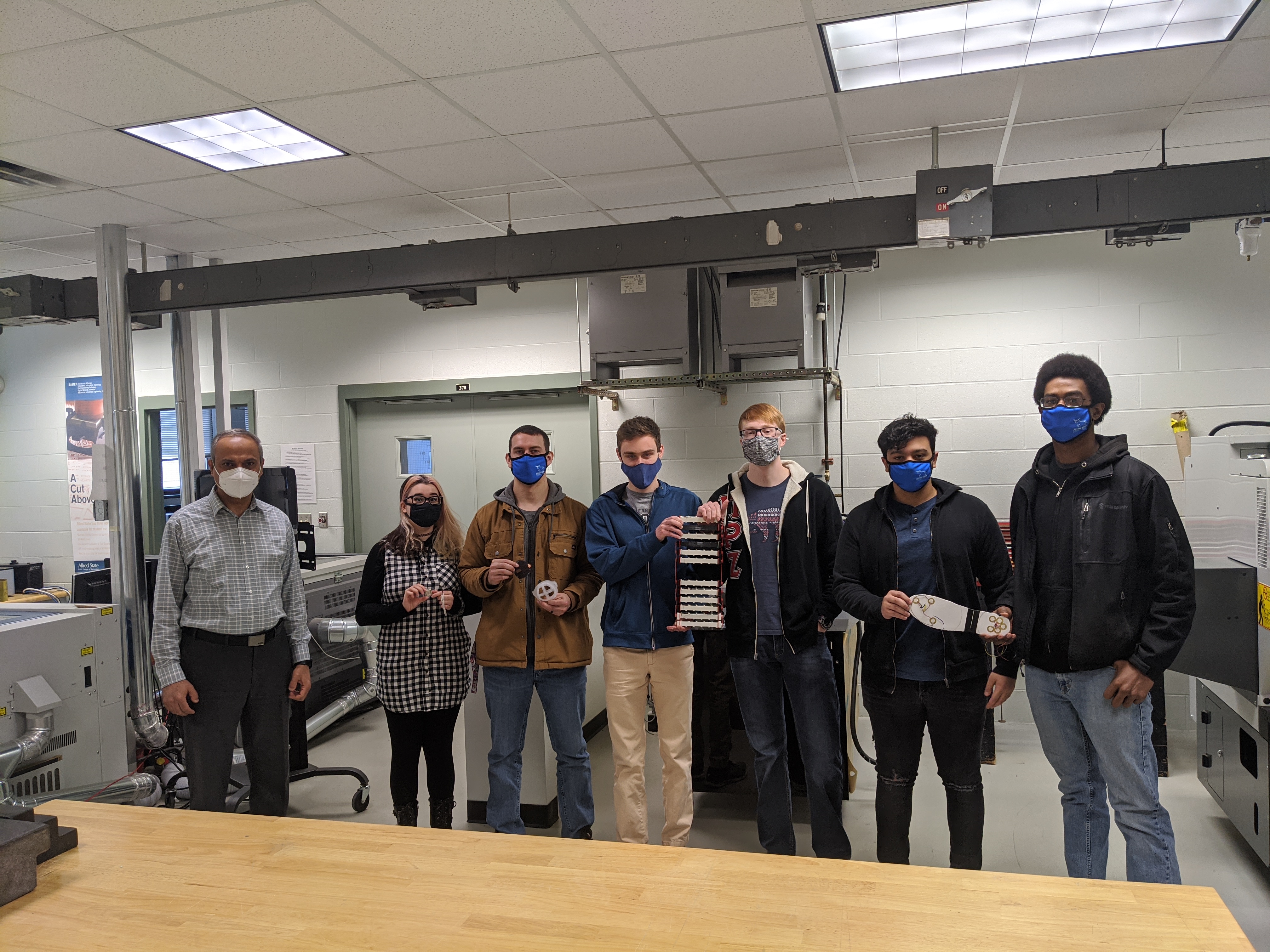
At a glance
 From face masks that can monitor the wearer’s temperature, to light-up vests that make it safe to run at night, Alfred State College (ASC) engineering students have been working on some incredible energy harvesting devices that have real-world applications.
From face masks that can monitor the wearer’s temperature, to light-up vests that make it safe to run at night, Alfred State College (ASC) engineering students have been working on some incredible energy harvesting devices that have real-world applications.

From face masks that can monitor the wearer’s temperature, to light-up vests that make it safe to run at night, Alfred State College (ASC) engineering students have been working on some incredible energy harvesting devices that have real-world applications.
Energy harvesting is the process of capturing energy from the surrounding environment and converting it into electrical energy to be used directly by autonomous devices and electronics or stored in a battery or capacitor for an indirect use. While most low-power electronics are powered by batteries with limited lifespans, energy harvesting technologies provide unlimited operating life.
Dr. Reza Rashidi, associate professor and chair of Alfred State’s Mechanical and Electrical Engineering Technology Department, said, “Energy harvesting is really hot right now. You see work on this topic being done in a lot of schools, especially the larger ones such as Stanford and MIT. We want Alfred State to be a part of that community, as well.”
According to Rashidi, he and Alfred State students in mechanical engineering technology and electrical engineering technology programs began working on energy harvesting-related projects in 2017.
In one such project, mechanical engineering technology student Ryan Hall and Rashidi created a multi-directional universal energy harvesting ball. Hall’s device consists of a rigid spherical core with internal tubes, coils, and magnets, and a flexible silicone-based shell holding a carrier fluid. According to an abstract of the project, the device “generates energy when subject to compressive force by moving fluid through a tube and pushing a permanently magnetized ball through a coil wound around the tube.”
As for the uses of the ball, the abstract states, “The energy harvester can be utilized in applications where there is an oscillating compression and it is not limited to certain applications due to its universal ball shape.” The research paper for this project is in the process of review for possible publication in an international journal.
In another project, students Jacob Bianconi, electrical engineering technology; Jesse Hallett, mechanical engineering technology; and Jessica Pealo, electrical engineering technology; and Rashidi developed “a rotational energy harvester that generates a power based on a combination of piezoelectric and electromagnetic methods.” According to the project’s abstract, this device “can be used in any existing rotational system such as vehicle tires, bicycles, rotating machines, and exercise equipment.” The results of this project were published in the proceedings of The Sixth International Conference on Mechanics and Mechatronics Research in Chongqing, China.
In a third past project, mechanical engineering technology student Nicholas Summerville, along with Rashidi and Assistant Professor Dr. Maryam Nasri, designed and fabricated “a novel rotational energy harvester, utilizing multiple magnetic actuators and piezoelectric beams for the maximum performance in a wide range of rotational speeds. The harvester can be used in different rotational applications with low or high rotational speed and produce high output,” according to the project’s abstract. The research paper on this project was published in a well-known journal titled “IEEE Transactions on Magnetics.”
As for more current projects, mechanical engineering technology students Brady Miller and Samantha Barker have been developing a triboelectric nanogenerator face mask. With this device, which was developed as a result of the COVID-19 pandemic, a person’s voice generates energy and powers a temperature sensor within the mask to measure the temperature on a person’s skin. This tells the person whether or not they have a fever as a symptom of coronavirus. This team with their project competed against students from other schools at the Startup Allegany Collegiate Competition this year and received third place.
Mechanical engineering technology students Ryan Lohr and Trevor Sax have been developing a triboelectric nanogenerator for a nighttime running vest. The generator is placed on the back of a vest, and while a person is running, it creates energy that powers an LED light to make the wearer more visible while running at night.
Electrical engineering technology students Xavier Ramos and Justin King, meanwhile, have been placing piezoelectric elements such as tiny discs into the soles of shoes to generate electricity when the wearer of the shoes walks. This electricity can be stored in a battery, which can then be used for a number of applications, from temperature sensing, to counting steps, to measuring acceleration, to analyzing a person’s balance.
Once the current projects have been completed, Rashidi said, they will be published in journals and presented at conferences, as well, like their predecessors. Understandably, Rashidi is very proud of his students for the work they have done in the field of energy harvesting.
“They have done a really amazing job,” he said. “They are really top students.”

